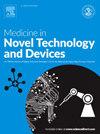Engineering nanofibers for cutaneous drug delivery systems and therapeutic applications
Q3 Medicine
引用次数: 0
Abstract
In the field of dermatological treatment and therapeutic innovation, nanofiber engineered through electrospinning technology have gained significant attention. These ultrafine structures replicate the natural framework of the extracellular environment, delivering exceptional breathability, malleability, and capacity to enhance cellular adhesion and tissue restoration. Scientists can precisely engineer these microscopic threads to administer pharmaceutical compounds with controlled released characteristics, rendering them particularly advantageous for addressing various skin conditions including lesions, eczematous inflammation, scaly erythematous plaques, follicular eruptions, and cutaneous malignancies. Incorporating antimicrobial elements, such as particulate zinc compounds and graphene-derived sheets can substantially improve their effectiveness in combating pathogenic invasion and accelerating dermal recovery. Furthermore, the electrospinning process facilitates the creation of multifunction-capable filaments with sophisticated attributes, including environment-sensitive drug release mechanisms that respond to skin surface acidity fluctuations, alongside diagnostic-therapeutic dual functionalities that permit continuous wound monitoring and assessment in clinical settings. Notwithstanding their remarkable promise, several hurdles persist in refining nanofiber architecture for bedside implementation, guaranteeing industrial-scale production capability, and executing thorough living organism investigations. This review examines cutting-edge developments in engineering nanofibers for cutaneous drug delivery systems and therapeutic applications and underscores their capacity to transform topical drug delivery systems, delivering personalized, effective, and precisely-directed treatment options.
用于皮肤药物输送系统和治疗应用的工程纳米纤维
在皮肤科治疗和治疗创新领域,通过静电纺丝技术设计的纳米纤维受到了极大的关注。这些超细结构复制了细胞外环境的自然框架,提供了卓越的透气性、延展性和增强细胞粘附和组织修复的能力。科学家们可以精确地设计这些微小的线来控制释放特性的药物化合物,使它们特别有利于治疗各种皮肤疾病,包括病变、湿疹性炎症、鳞状红斑斑块、毛囊疹和皮肤恶性肿瘤。加入抗微生物元素,如颗粒锌化合物和石墨烯衍生的薄片,可以大大提高其对抗病原体入侵和加速皮肤恢复的有效性。此外,静电纺丝工艺有助于创造具有复杂属性的多功能细丝,包括对皮肤表面酸度波动作出反应的环境敏感药物释放机制,以及诊断和治疗双重功能,允许在临床环境中持续监测和评估伤口。尽管纳米纤维具有非凡的前景,但在改善其床边应用的纳米纤维结构、保证工业规模的生产能力和执行彻底的活体研究方面,仍存在一些障碍。本文综述了工程纳米纤维在皮肤给药系统和治疗应用方面的最新进展,并强调了它们改变局部给药系统的能力,提供个性化、有效和精确定向的治疗选择。
本文章由计算机程序翻译,如有差异,请以英文原文为准。
求助全文
约1分钟内获得全文
求助全文
来源期刊

Medicine in Novel Technology and Devices
Medicine-Medicine (miscellaneous)
CiteScore
3.00
自引率
0.00%
发文量
74
审稿时长
64 days
 求助内容:
求助内容: 应助结果提醒方式:
应助结果提醒方式:


